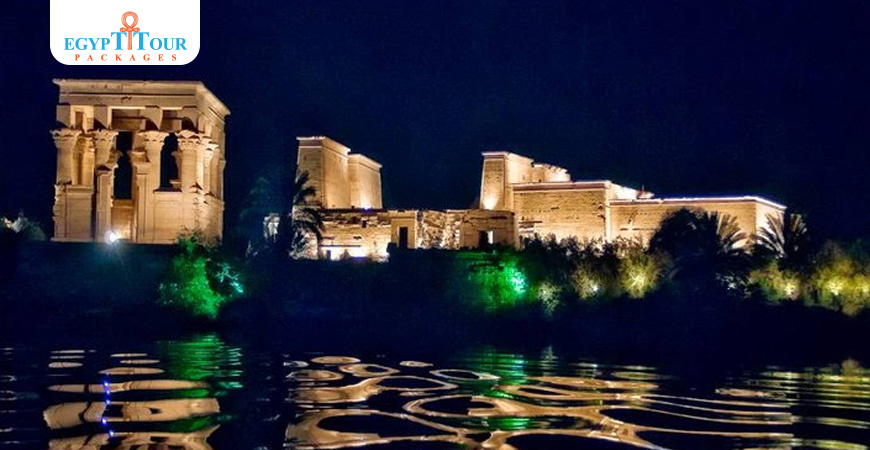
Philae temple
On the banks of the Nile is located the pearl of archaeological sites, the Temple of the Philae, one of the most important archaeological temples in Egypt
Philae Temple
On the banks of the Nile is located the pearl of archaeological sites, the Temple of the Philae, one of the most important archaeological temples in Egypt and Aswan, which is unique in its distinguished location and the history of the ancient Nubian civilization. It is considered one of the Nubian monuments that was saved by UNESCO in cooperation with the Egyptian government from drowning after the construction of the High Dam.
- The Location of Philae Temple:
Philae Island, one of the islands located in Aswan in the south of the Arab Republic of Egypt. Philae Island is located in the middle of the Nile River, as we know that the Nile River makes its way throughout the Republic from south to north. Philae is located more specifically near Aswan and not Aswan itself. The temple is not located in the city itself, but rather it is close to the west from the Nag Jabal Shisha area. It is located to the south of Agelika Island. It also extends on the Aswan Road near Abu Simbel, as it is on the western bank of the Nile River, which faces the Abu Simbel district.The name Philae goes back to the Greek word philae, which means beloved. It was known in Arabic literature as Anas al-Wujud, in reference to the legend of Anas al-Wujud in the folklore stories . As for the ancient Egyptian and Coptic name, it is Belak, which means the limit or the end, because it was the last border of Egypt in the south.
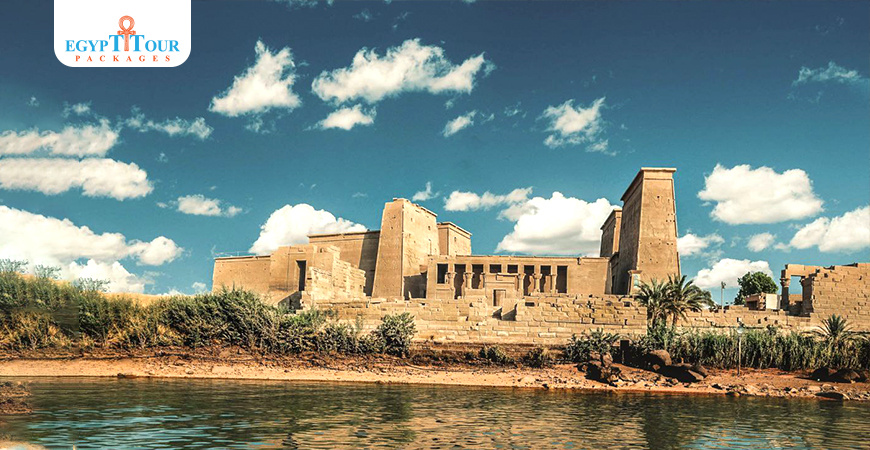
Isis Temple Aswan
Who built the temple of Philae? This temple was started by Ptolemy II Philadelphus, which was dedicated to Isis, the mother of Horus, the lord of kingship. The Temple of Isis is considered one of the most continuous ancient Egyptian temples, as the temple continued to perform its role until the era of the Byzantine King Justinian I, who ordered the closure of all pagan temples. Next to the Temple of Isis there is a dedicated temple. Hathor was built by Ptolemy VI Philomator and Emperor Augustus, the first emperor of Rome. Isis was the main deity of the region. Archaeological experts classify the Temple of Isis as the last temple that preserved the ancient Egyptian religion, as its priests continued to perform Isis rituals until the year 524 AD, before King Justinian closed the temple and killed the last of its priests.The temple is one of a group of temples dedicated to the worship of Isis and gained wide historical fame, which was the reason for its transfer during the sixties after an international campaign to save the temples after they were drowned after the construction of the High Dam.
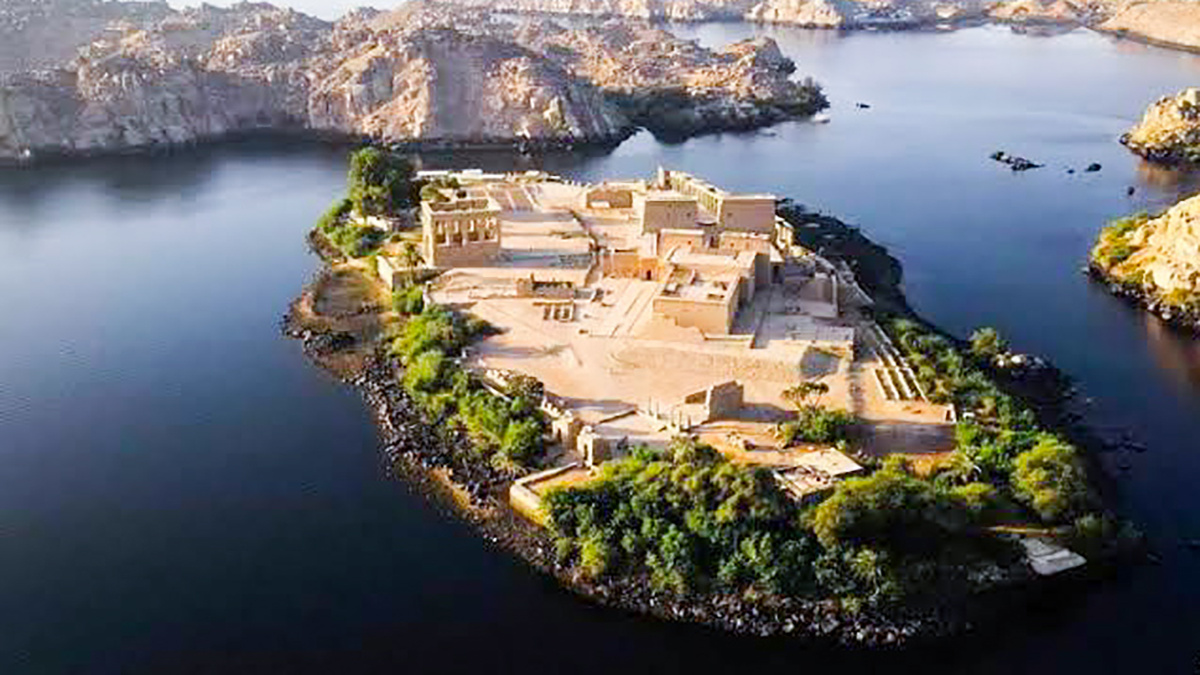
Philae Temple History
Reasons for building the temple: Nectanebo built a huge temple, then Ptolemy Philadelphus built it. After that, every king was keen to build a temple on this island, making it a land for building and constructing temples. He dedicated his Philae Temple to the goddess Isis, as she was known to the ancient Egyptians as the god of motherhood and the moon. The goddess Isis was worshiped by both the ancient Egyptians and the Romans. The goddess Isis was the main deity of the region, where the emperor was depicted offering sacrifices to the goddess Isis, her husband Osiris, and their son Horus.
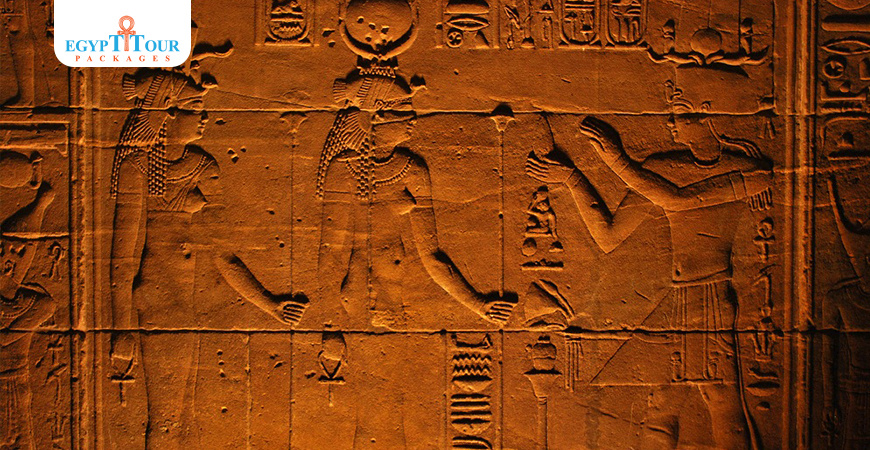
Philae Temple Relocation
- Moving the temple: The temple was flooded by the waters of the Nile, and it was divided and reassembled. After it was on the island of Philae, it became located in a new location, which is now on the island of Agilika, during the UNESCO campaign for Nubia in the 1960s to save the sites that were flooded by the waters of the Nile during the construction of the Aswan High Dam. Since the transfer it has not been flooded again.There are no factors that make it lose its basic structure. As the site on the island of Philae is humid and vulnerable to sinking at any time, the transfer process took about two years, as the waters of the Nile surrounded the island of Philae and the temples on it from every side, and of course this threatens the archaeological value.
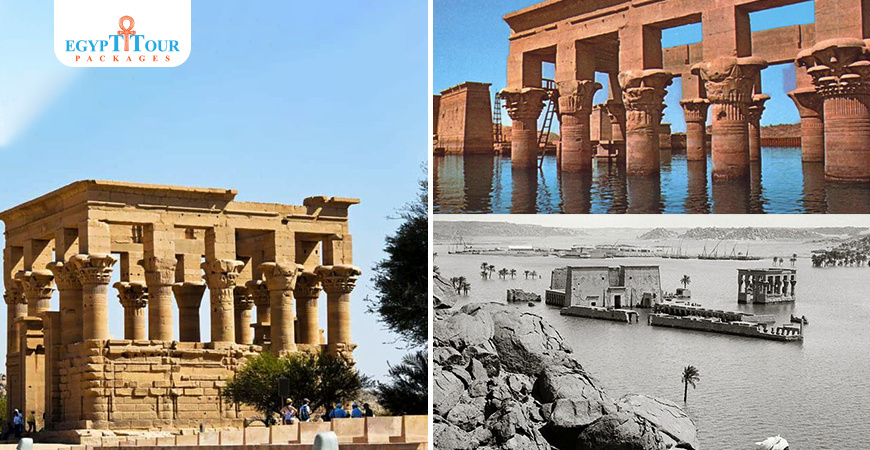
Philae Temple sound and light
- Sound and light shows
The temple presents a sound and light show, and through that show you will live one of the best experiences in your life, as you will enjoy great historical stories and secrets that you did not know before. On a journey into the past, you can choose from more than 10 languages ??to hear the show.
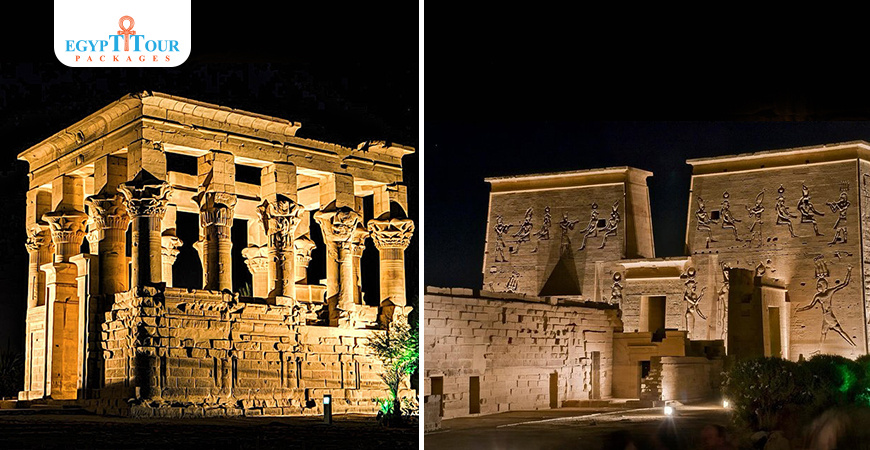
Philae Temple Architecture
The temple was built in the third century BC, and there are many other Ptolemies who added some drawings and inscriptions to the Temple of Philae, and although they are just touches, they are one of the masterpieces of the temple. From Egypt, the worship of Isis extended to many other civilizations, as the people of Greece and the people of Rome followed her and in various parts of the world.The empire until Roman rule was implemented in Egypt, then the rulers wanted to beautify the Holy Island, as Emperor Augustus Caesar built a temple on the northern end of Philae in the middle of the ninth century BC, and other emperors left monuments and temples on the island.The worship of Isis dominated the island of Philae until a decree came from Emperor Theodosius imposing the Christian religion on all parts of the Roman Empire. During the rule of Justinian, Christianity arrived on the island and the island of Philae was transformed into a hall for practicing the Christian religion. When Islam came, Philae was preserved to be a legendary fortress, considered one It is one of the largest monuments within the group of temples that were built on the island of Philae. It had other monuments on the island of Philae, such as the shrine of Nectanebo I, and rows of columns dating back to the Roman era. There is also the Temple of Ares Ophis and the Temple of Mandolis, which dates back to the Roman era. There are also many edifices and temples dating back to the Ptolemaic era. Like the Temple of Hathor.
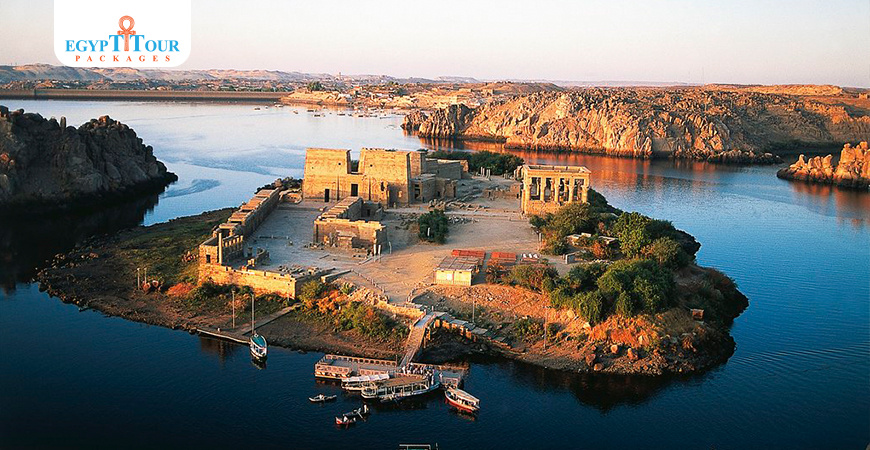
Philae Temple(architecture)
- At the gate of Ptolemy II stand two lions made of pink granite, and there are two obelisks made of pink granite. These obelisks are important because the hieroglyphs found on the base of the obelisks have been compared to the Rosetta Stone, and they played an important role in deciphering the Egyptian alphabet.
- On the first pylon: There are abundant inscriptions of Isis. For example, the eastern tower of the first gate depicts Dionysius as holding the enemies of Egypt. There are two scenes, one of the Pharaoh offering his crown to Horus and Nephthys, and the second scene of a Pharaoh offering incense to Isis and Horus.
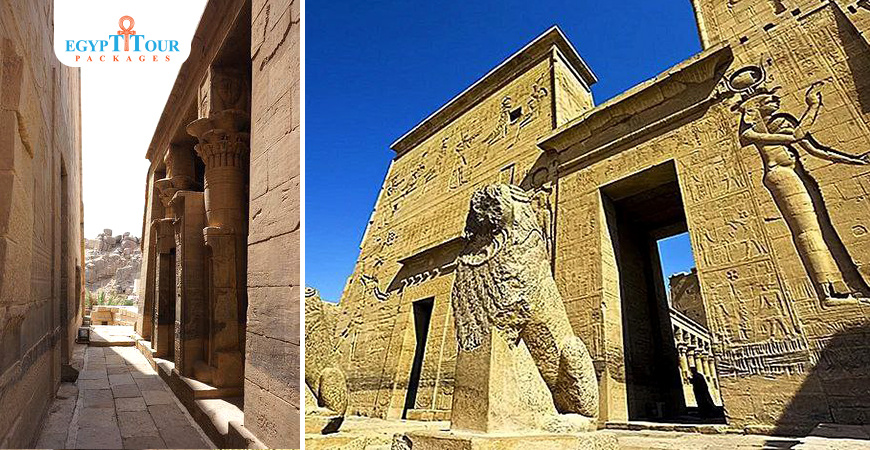
Inside Philae Temple
- Inscriptions: An Egyptian archaeological expert revealed the last written text, a text written in hieroglyphics dating back to the late fourth century AD, within the inscriptions of the Temple of Philae. The text is classified as one of the votive texts written by a priest called Ismet Ekum, one of the priests of the Temple of Philae in the fourth century AD. This indicates the continued existence of the language. Hieroglyphs and the worship of the Aten in Egypt until at least the end of this century
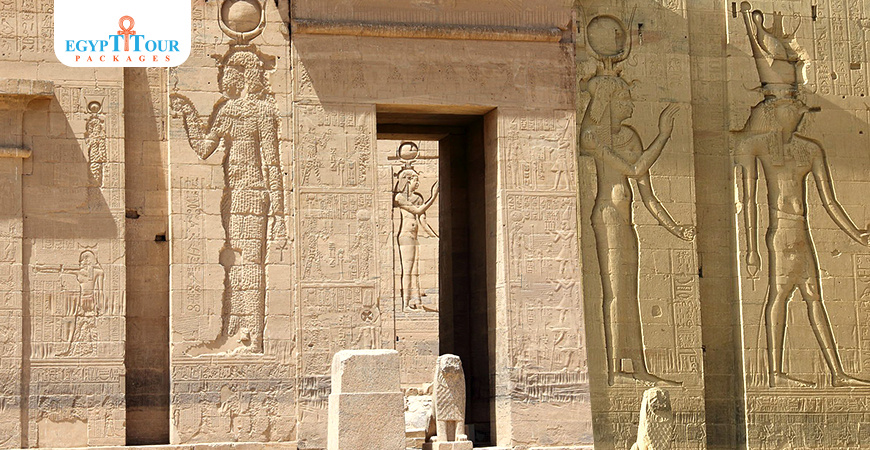
Inside Philae Temple(a birth chamber)
- The "Mamezzi" birth chamber:
In the Temple of Isis, there is a birth chamber, which is one of the common features in Ptolemaic temples. The birth chamber in the Temple of Isis is depicted, and Horus (the son of Isis) is depicted as a falcon wearing a double crown, and his wife Isis is depicted carrying the newborn Horus between her arms. Here the king performed the rituals for the birth of his son Horus. In the central station of the Temple of Isis, the birth chamber is dedicated to Horus, while the second pylon leads to the Hall of Columns.
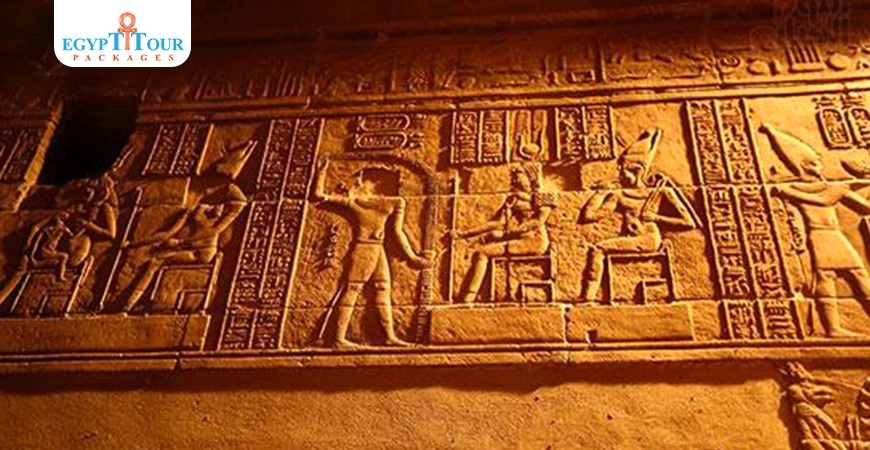
Is Philae Temple worth it?
When in Aswan, make sure to visit the stunning Philae Temple. It is one of the most well-preserved temples from the Ptolemaic era in Egypt, along with the temples of Dendera and Edfu. The majority of the temple complex was constructed during the Ptolemaic period, between 332 and 30 BC. The main deity worshipped here was Isis, but Osiris and Hathor were also revered. Interestingly, the Philae Temple was later used as a church by Christians, and you can still see carvings of Coptic Crosses inside. The Aswan Old Dam was finished in 1902, causing Philae Island to be flooded. The island and its temples were only visible during summer when the dam gates were opened. In the 1960s, UNESCO oversaw the dismantling and rebuilding of the temple on Agilkia Island nearby.
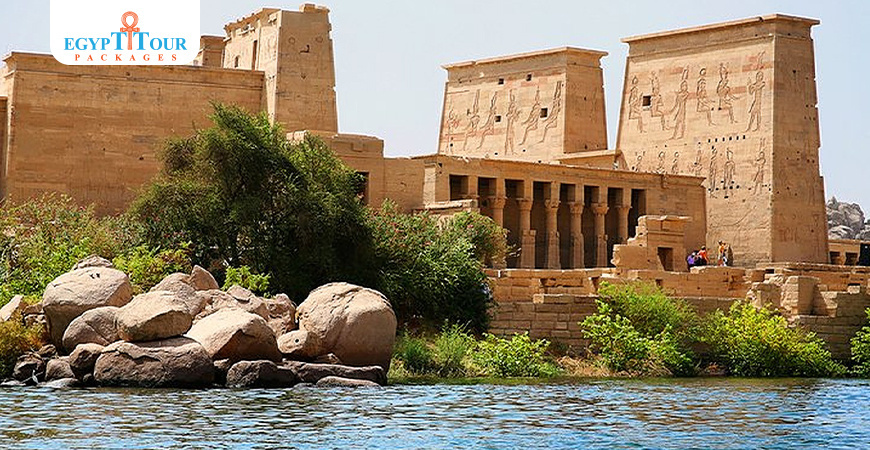
Post A Comment
Your Email Address Will Not Be Published.
















































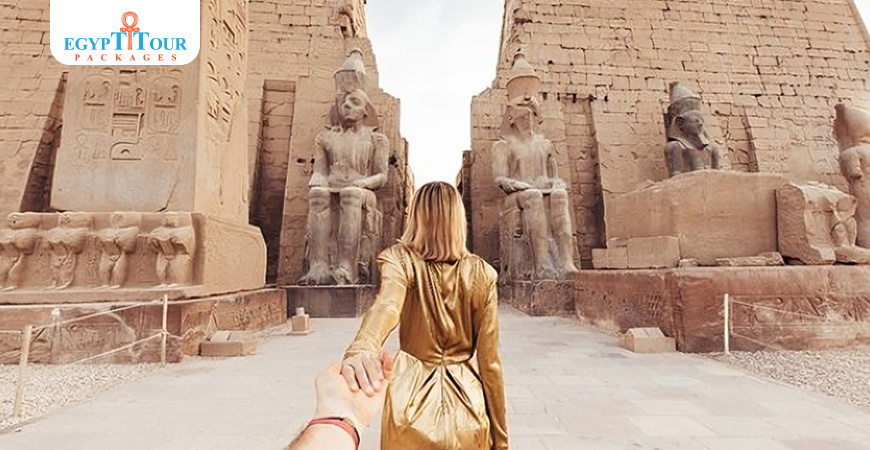

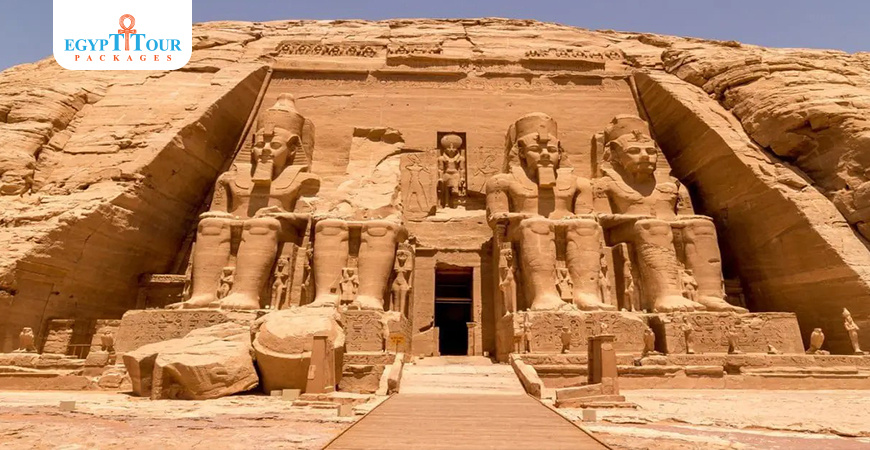
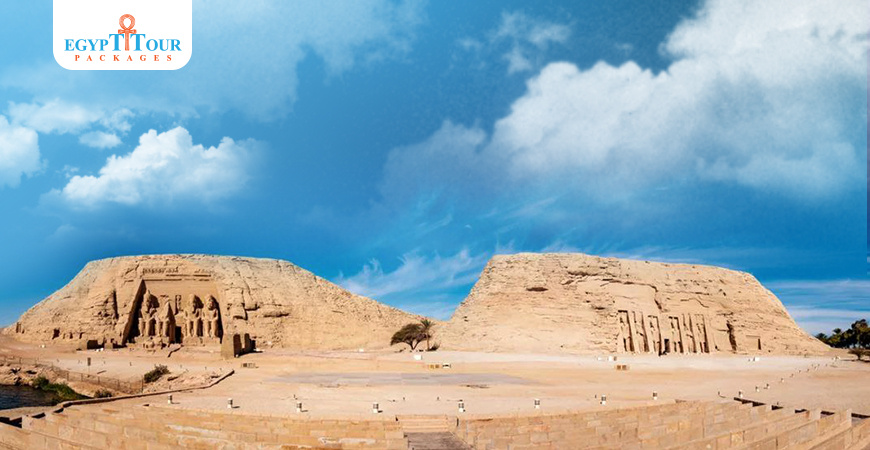
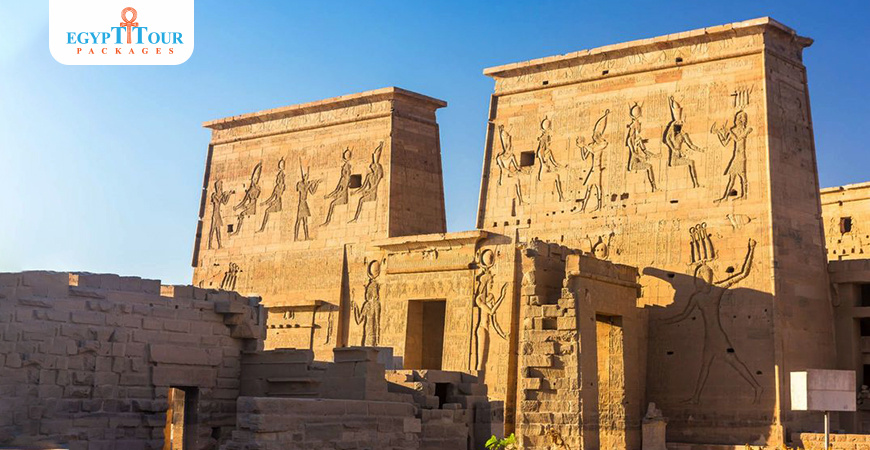
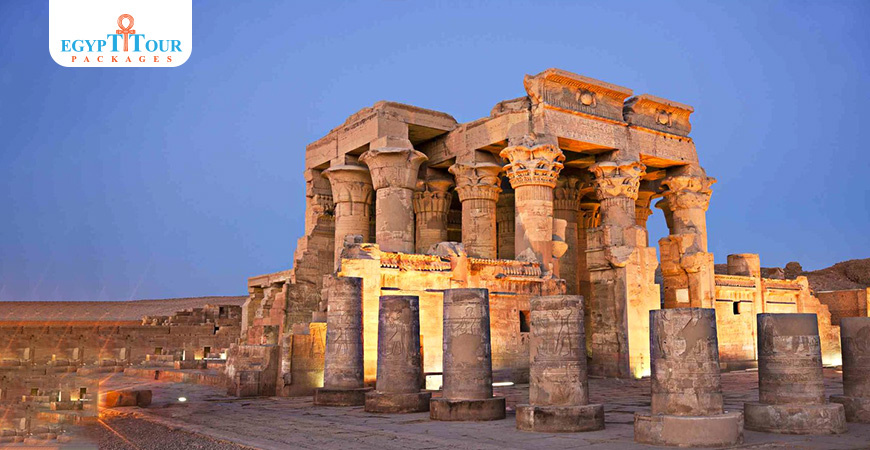
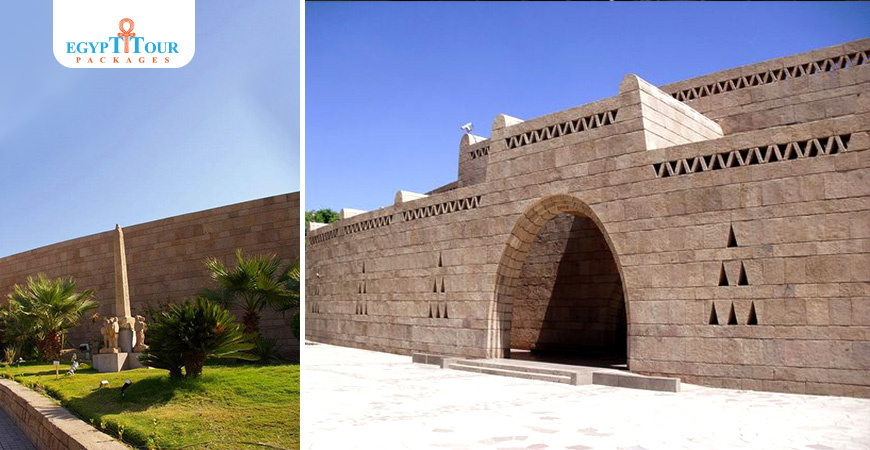
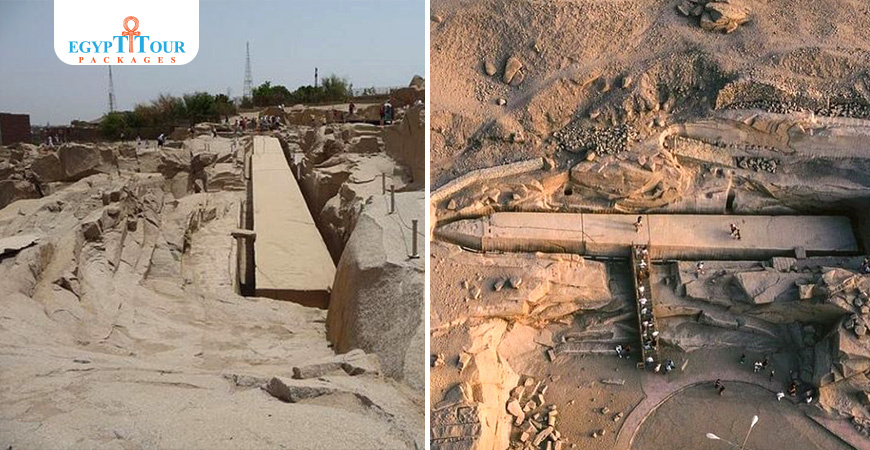
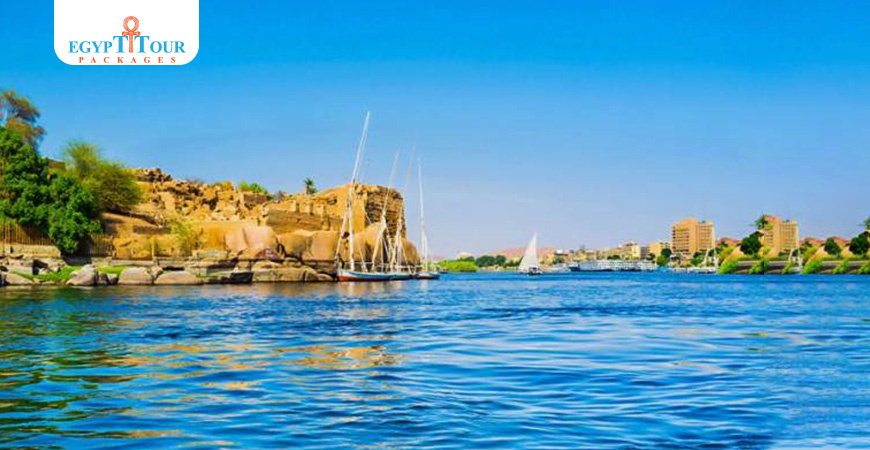
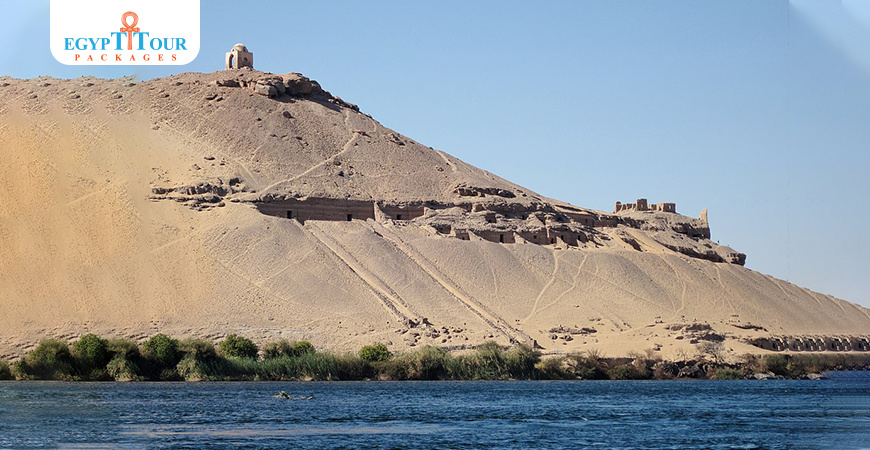
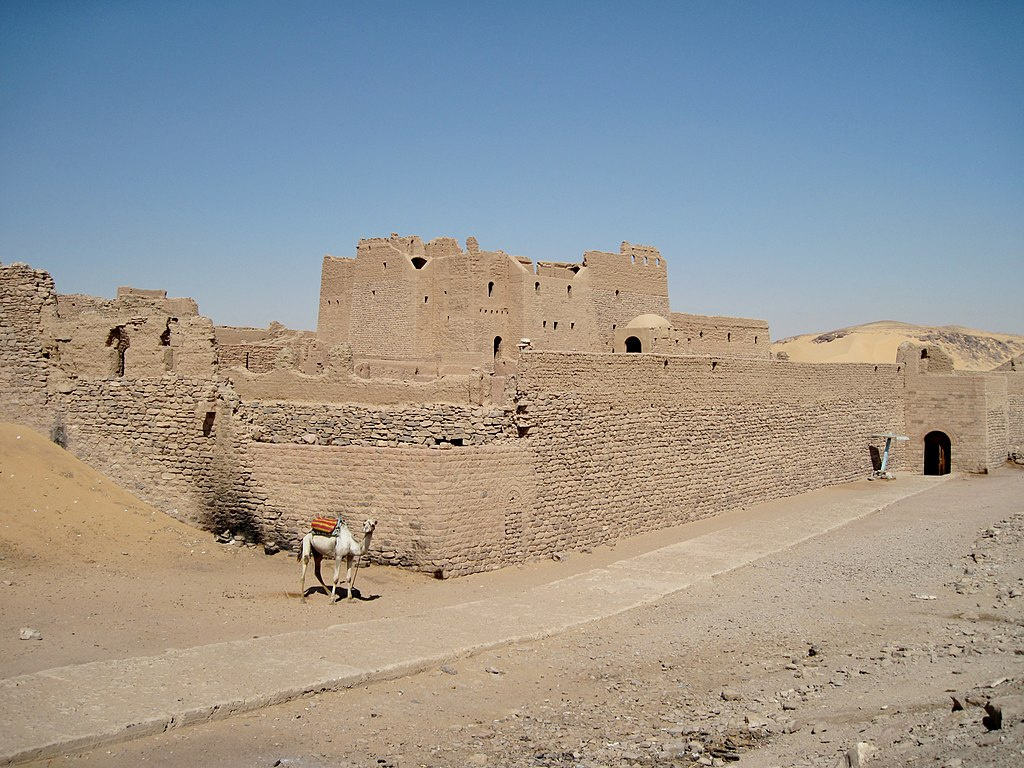
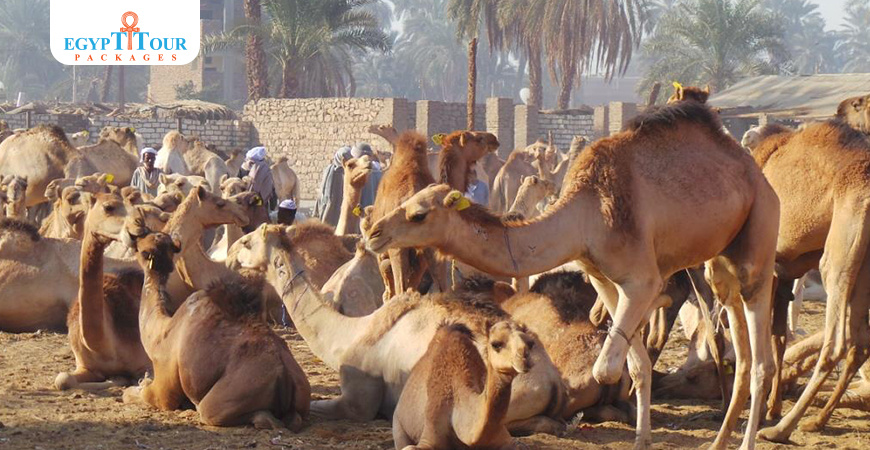
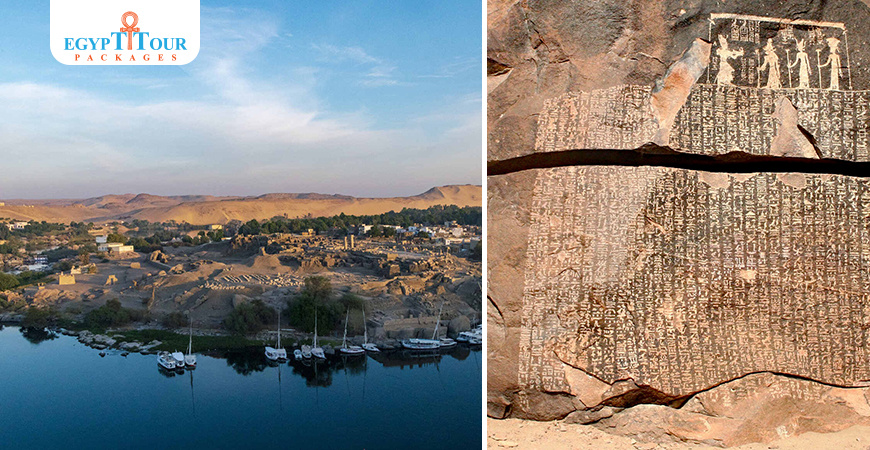
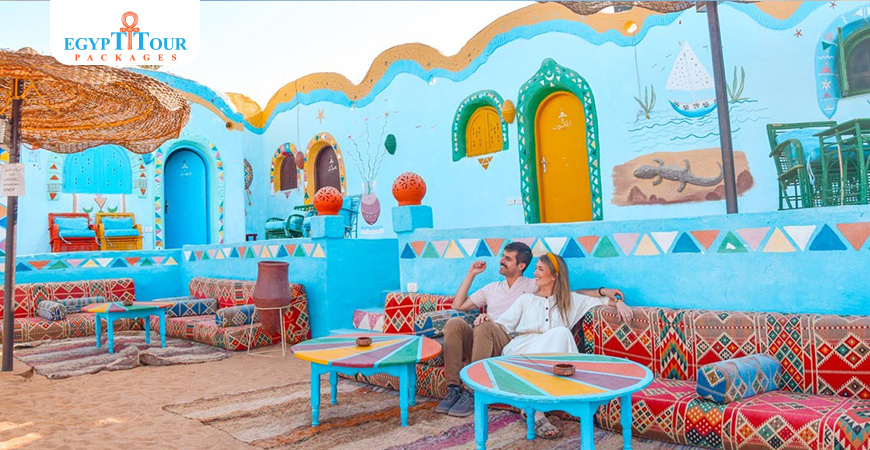

0 Comments